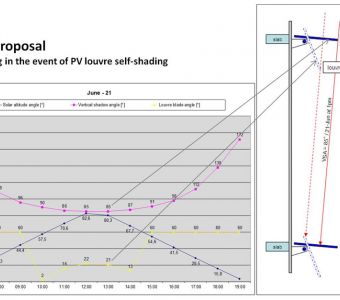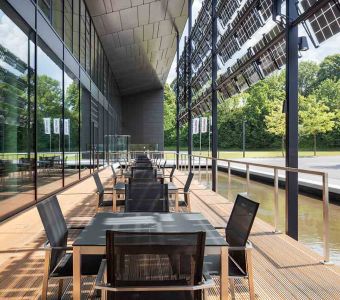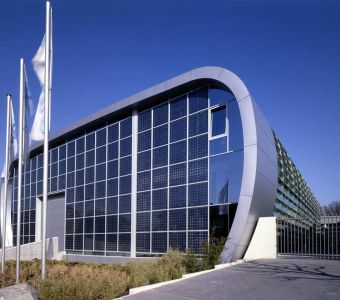Building Integrated Photovoltaics

Tracking Control Concept | exemplarily

Tracking PV louvres

PV integrated into mullion-transom façade
BIPV sets itself apart from standard photovoltaics, because BIVP takes control of the typical functions of cladding and it is well integrated into an architecturally artistic and aesthetic background. PV modules are customizable in size, structure, and object-specific required cell layouts. Architects have designated photovoltaics as new, interesting and designable building components. BIPV offers its 'green' current transformers as well as solar protection, thermal insulation, and weather protection effects. Individual cell and module layouts ensure your freedom of creativity.
Individuality and Architectural Freedom
Anyone who is unwilling to accept off-the-shelf photovoltaic solutions will definitely be in the right place with us. Whether purposed as a secondary facade, fixed or movable, sun tracked, integrated into the primary facade, designed as a glass-glass or glass-tedlar module, in crystalline silicon technology or thin film (CIS) or by means of organic PV (OPV). Design possibilities are virtually unlimited.
Good reasons for photovoltaic
- Clean, emission-free energy form
- Fossil energy is finite
- Low operating costs
- Everyone has access to the sun
- Provides an “inexhaustible” source of energy
- No overexploitation or depletion of fossil fuels
- High supply provides price stability
- Elegant energy conversion - from light to electricity
- No economic / political struggles over distribution
- No direct release of CO2
- Extraction and transportation of fossil fuels leads to landscape encroachment and pollutes the environment
- Liberation from other pollutants due to combustion of fossil fuels
- Implementable through cladding (building envelope) as an active energy generator
- New and exciting design element for architects
What to consider when implementing building integrated photovoltaics
Building-integrated photovoltaic facades require a different approach than traditional PVs. Primarily, this can be seen in the facade, which requires additional construction codes that are not rendered by standard modules.
The residual structural capacity in the case of fractures, extended static and dynamic approaches, as well as more securely developed elements all act as examples. Module and cell assembly often determine inner lighting and heating ratios, which in turn determine the level of comfort. External shading or cell-shading patterns have a significant impact on energy production and performance. They require a well-tuned module and inverter concept. Visually appealing outlets, constructively concealed wiring, among other aesthetic aspects are certainly considered. Individual cell and module layouts determine light and radiation penetration.
How may we be of assistance?
- Basic Consulting / Searching for Optimal Solutions
- Yield Calculations
- Concept Development
- Inverter and Cabling Concepts
- Feasibility Studies / Expense Budgeting
- Development, Construction and Design of Object-specific Solutions
- Profitability Analysis
- Bid Proposals
